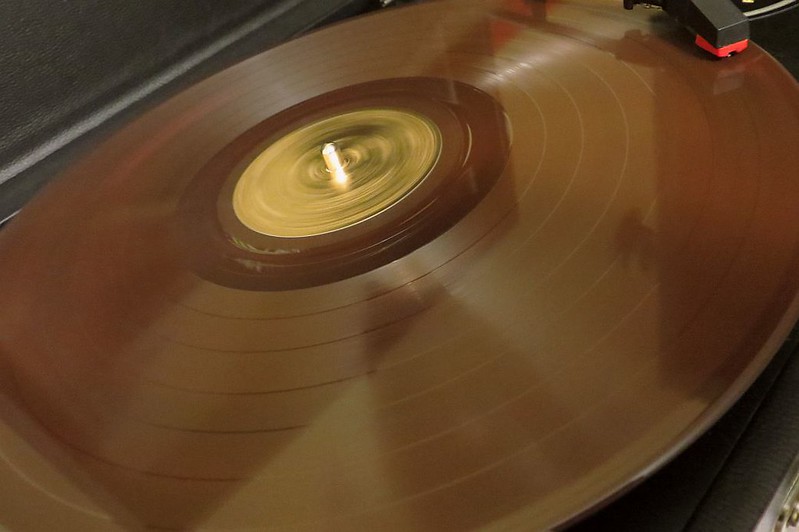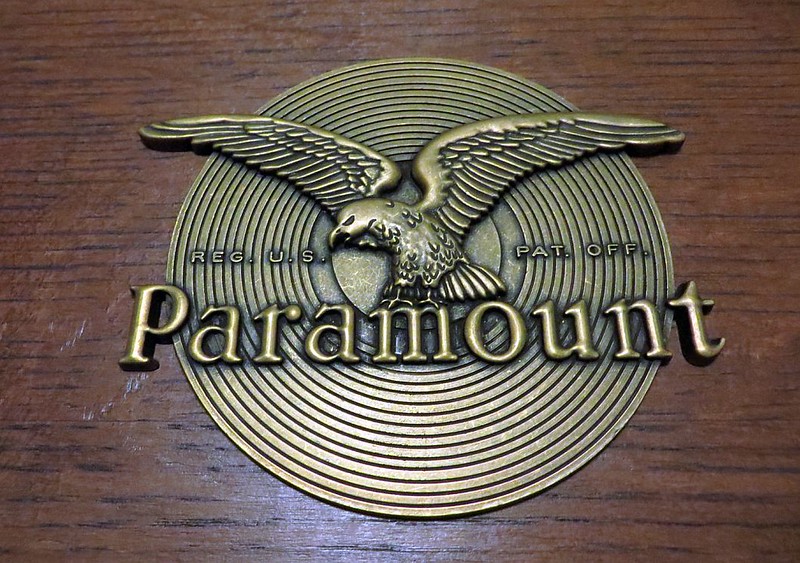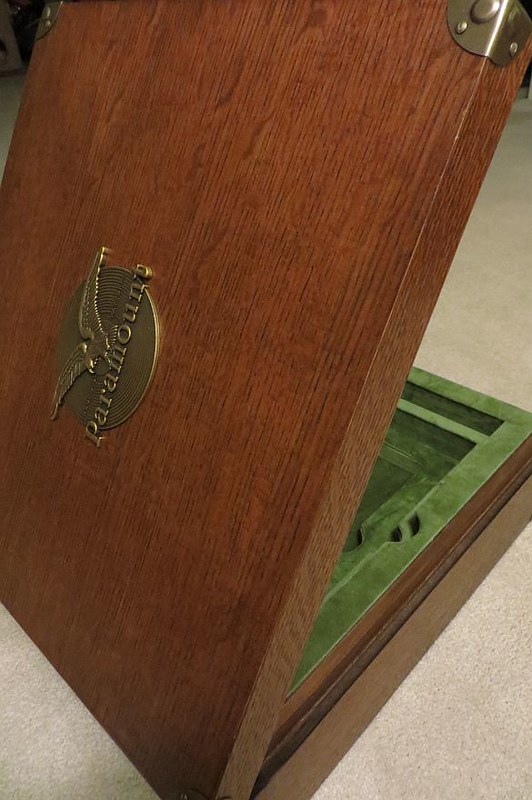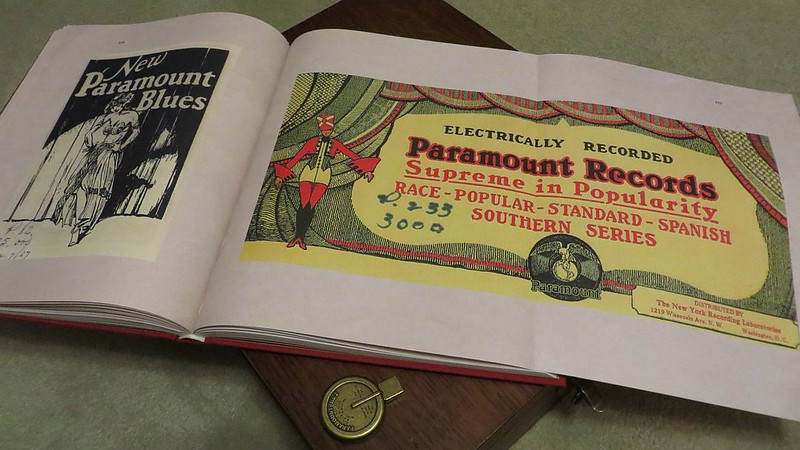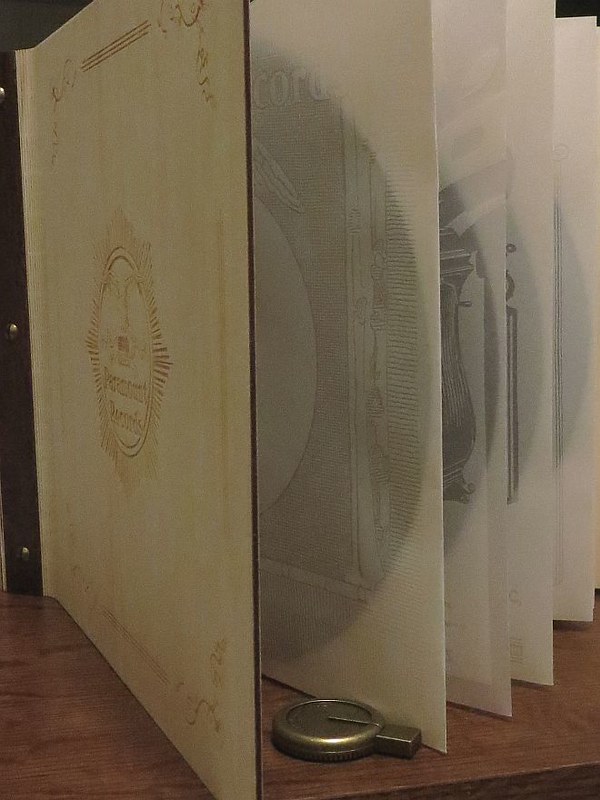So there I was, all by myself. Stretched out in my camp chair, trying to snooze, waiting for Sharon and Sam. Instead of driving to meet my buddies, I had flown into Miami Beach and was sitting there alone in front of the Fillmore staking out our spots while they drove down from Jacksonville, where they'd seen Jack White perform the night before.
 |
| In Jacksonville with Helen but without me. Photo courtesy of Sharon Harrow. |
Of course, I was unhappy about having missed that show due to poor planning on my part, especially when they finally arrived and began letting slip little details about it, but for a change I wasn't going so far as to eat my heart out over it. We ended up having too much fun together for that.
 |
| In Miami with me. Photos courtesy of Sharon Harrow |
I was also surprisingly not eating my heart out over the fact that these two shows in Miami would be my last for the foreseeable future. Writing this a few days after, I'm just waiting for delirium tremens to set in (especially since Sharon, Helen, and Sam were at the last show of this leg of the tour at the same time that I was typing), but so far, so good.
The other thing that struck me as strange was that I didn't have the usual butterflies in my stomach leading up to these shows. It hit me the first night while leaning on the rail waiting for the show to begin that instead of excitement, I was feeling something that seemed strangely like relief. That's not to say I wasn't excited for the show, because I transformed into the usual bouncing banshee once Jack hit the stage. In that moment, though, I was just... calm. There had been no severe line angst that day and, being perfectly honest with myself, I had to admit to looking forward to getting a break from the emotional roller-coaster of the last couple months. We would all be on hiatus after this week, as the only dates Jack had scheduled for the rest of the year were in Mexico, the U.K., and Europe and there have been no hints as to when anymore will be announced.
But before that hiatus, I had two more nights with him.
As usual, it started with this (the irony of someone watching Lalo's injunction to not watch the show through a 3 inch screen can't be missed)--
The first night was a little on the strange side, with three sets like at the Detroit Fox show. But the feeling of this one was completely different from that one. The crowd at this show was rowdy, even slightly obnoxious in spots, with a bit of pushing and shoving going on around us (nowhere near as bad as Cleveland, though, at least where I was standing), but Jack seemed to be enjoying their response to him. He made a lot of eye contact with people in the front, including us, much of it accompanied by that infectious smile. So we were confused when the curtain closed after a relatively short set that included standouts like a nice long introductory High Ball Stepper, the rarely heard (though this was the third time for me) I Think I Smell a Rat, a more complete John the Revelator tucked into Cannon than I'd heard before on this tour, and a completely improvised, unnamed song. But then the curtain swept open again and the crowd went nuts to Fell In Love With a Girl. This second set included a very sweet Same Boy You've Always Known, and then the curtain swept shut again after We're Going To Be Friends. Very strange to end a show on such a mellow song, which left us confused all over again. But the show didn't end then, because there was yet one more set of just three songs, all blazing ones-- Icky Thump, Freedom at 21, and Seven Nation Army. And unlike Fenway, this crowd knew how to do a fucking Seven Nation Army chant. (More irony, though, with this person filming everyone else filming the song. But, of course, I'm ironically grateful that they did.)
 |
| What usually happens when he hangs the guitar from the mic stand (this will make sense further on) |
It was a damned good, high energy show, but something felt a little off and we had no good ideas of what it might have been.
But if the first night was a little strange, the second night was... well, I'm still not sure what adjectives to apply to it. In talking about the Fenway Park show, I mentioned Sharon and I finding each other afterward and wondering "What did we just see?" This show yanked the same response from us, but expressed ecstatically instead of with bemusement.
Let me preface this by stating that I never in my life thought I would attend a Jack White show during which he performed sitting down. The man just has too much energy. He may not always spin around the stage like a tornado, but even standing still you have the feeling that he could begin whirling at any moment. But this show was proof that you just cannot ever have any kind of assumption or expectation where Jack is concerned.
The only other time I know of anything similar to this happening was at a private party at end of the 2010 Dead Weather tour, late at night after the band performed on the David Letterman show. Jack apparently got into a mood and exploded at the crowd and when video surfaced a few days later, fans at one of the message boards exploded over the things he said. Considering my own issues with temper and snark, none of that bothered me. If anything, hearing of incidents like that makes me identify with him more strongly because I understand where that sort of shadow stuff comes from. No, what bothered me about the videos that popped up from that night was seeing the state he was in when he came out from behind the drum-kit to play guitar on Will There Be Enough Water. He started out by sitting heavily down on the front of the drum riser with his guitar and then ended up propped up against the speaker cabinet at the side of the stage for support when he wasn't at the mic singing or at his pedal board for a solo. I found it very disturbing to watch, much more so than his displays of temper. His playing wasn't affected, the solos he wrenched out were as searing as ever. But was it exhaustion, illness, drunkenness, all of the above, or something else that made him unable to stand without support? I don't know and never will. But I know it wasn't the Jack that usually takes the stage in front of a crowd.
But this night was not like that.
It started out as tempestuously as any other show, with Dead Leaves leading into High Ball Stepper leading into Astro leading into Sixteen Saltines. The first slow moment was a lovely You've Got Her In Your Pocket, but then two songs later the energy ratcheted back up again with Lazaretto, Just One Drink, and Black Bat Licorice. And then things took an entirely different direction.
 |
| Fixing the pompadour, something he did several times throughout the show |
After Alone In My Home, Jack decided he wanted to talk to his friends, meaning us, the audience. He's done that a lot this tour and the media has made a big deal of his "rants". In return, he's made a big deal at recent shows of the media's big deal of what he considers "just talking to his friends", which is how he described it at Cleveland. He also talked at Cleveland about how he feels he should end everything he says (even phone conversations with his mother) with "But you know I'm just joking". This night in Miami was a perfect example of how subtle his humor can be when he gets going. He began by asking his guitar tech, Abraham, who had already been dealing with multiple instrument issues, to find him a stool, one like stand-up comics use with the rungs at different heights so you can prop your feet in different spots (yes, he was that specific). While Abraham went off to search, Jack began pacing around the stage with mic in hand, introducing the band. I can't remember all of the intros, but by the time he got to Fats Kaplin and began telling us how he'd mowed Fats' lawn in the 80s, I was laughing out loud. Abraham came back with a drum stool and set it by the mic stand, only to be told by Jack that it was too short for someone as tall as he is. Off went Abraham again, and Jack took the opportunity to tell us about the public school tube amps he's been using this tour, explaining how they were once used for the sort of announcements principals make in school and that he bought all three for $150 and then checked on eBay the next day to make sure that was a good deal because that's what you do these days (I've actually heard elsewhere that they cost closer to $18,000 apiece) and that the other thing they're really good for is as guitar amps.





Edited a couple weeks later: And God or whatever's above, please bless the young girl who broke the rules and recorded those band introductions. Obviously I mis-remembered the order of some things, but that really doesn't matter. What matters is this--
Here's the same from another, closer angle--
At some point, back comes Abraham with a taller drum stool and down sits Jack at the mic with his Gibson Army-Navy acoustic guitar (Or was it the Gibson L-1 acoustic? He asked for that to be brought out at one point). He was like Goldilocks, though, because this stool wasn't quite right either. After asking the audience if it was alright if he crossed his legs, he went ahead and did a song and then got Abraham back out so that he could very earnestly and lengthily clarify what he wanted. I couldn't hear what he was saying but Sharon did and told me later that the drum stool apparently "was not representative of the proper form". Off goes Abraham yet again and this time he scored with just the right form of stool. At this point Jack was able to prop his feet the way he'd wanted to all along and he launched into a conversation of how sugar is bad for you, but so are artificial sweeteners and Stevia is supposed to be good for you but now the latest thing is Sorbitol and could "you fucking hipsters make up your minds" and get back to him and by this time we were laughing our asses off as he launched into Sugar Never Tasted So Good.


None of this slowed the show down a jot, just made it very, very different. His body might not have been moving around while he sat at the mic for that handful of songs, but the gyroscope in his brain was spinning full blast and he had us fully engaged with the dryness of his humor and wondering what the hell was going on.
In contrast to the previous night, Jack sang most of the songs of this show with his eyes closed. But there was one moment, when he stood up from his stool to take a bow at the end of Blunderbuss, when he looked down at the people in the front and his eyes traveled from center-stage across the row outwards and I swear they stopped on Sharon, Sam, and me as the stagehands gradually pulled the curtain closed in front of him.
He was back to electric guitar and on his feet for the second set, though definitely not as active as usual. But while his energy may have been a bit lower, his intensity wasn't. And there were other moments when the gyroscope went off in whimsical directions, like the minute or so he spent adjusting the guitar mic at his stand, twisting it one way and then another until it became clear he was just playing around with the thing and not at all concerned with getting it into the right spot, and at the end of the show, when he draped his guitar strap from the mics and then began wrapping the guitar and strap around the booms with a little grin on his face, leaving the guitar balanced atop this construction, watching it sink a little without dropping while feeding back crazily as he and the band lined up for their final bow. All of these moments made for the most strange and wonderful show.
In talking about it afterward, we came to the conclusion that the ankle he sprained in San Francisco had not healed as well as it appeared at the first few shows on this leg of the tour. This could also explain why he was less active at Fenway Park the previous week, when I thought the issue was a lack of connection with the crowd. Whatever the case, there was no lack of connection this night and we saw him perform in a completely unexpected way. It left me giddily high in just the way I love so much and when we walked out of the theater into the beginning of a drenching rainstorm, the last thing I wanted was the protection of an umbrella. I wanted to feel everything-- euphoria, whimsy, electricity, rain, everything. This is why I do this. This is why I'll be damned if I'll give up on the addiction.
When the roller-coaster ride will continue is up to Jack.
(But here's where it began: Introduction)
